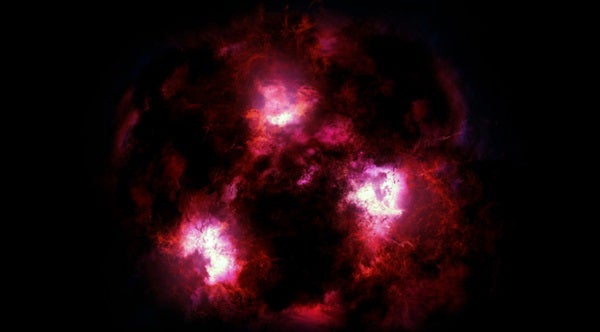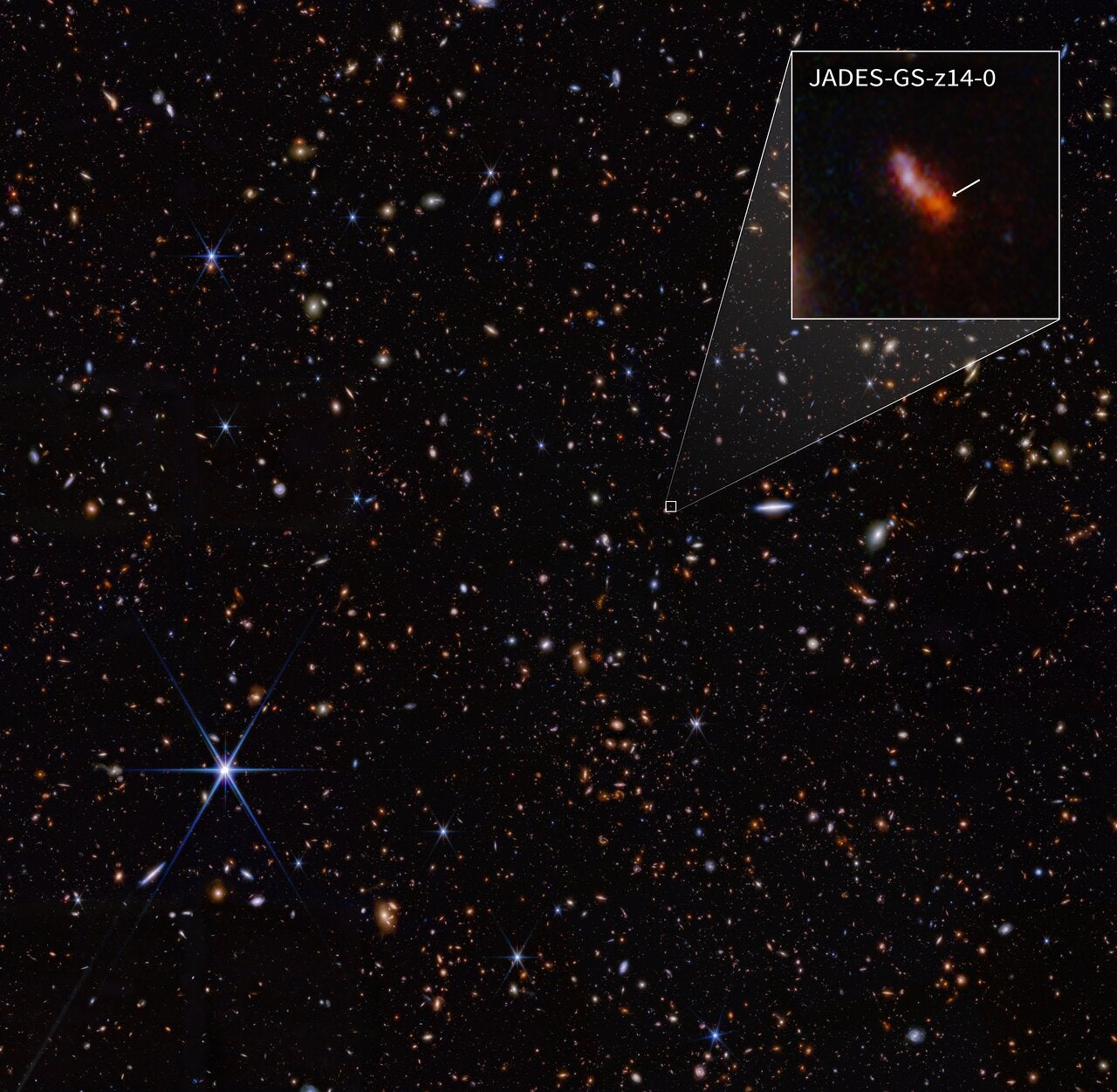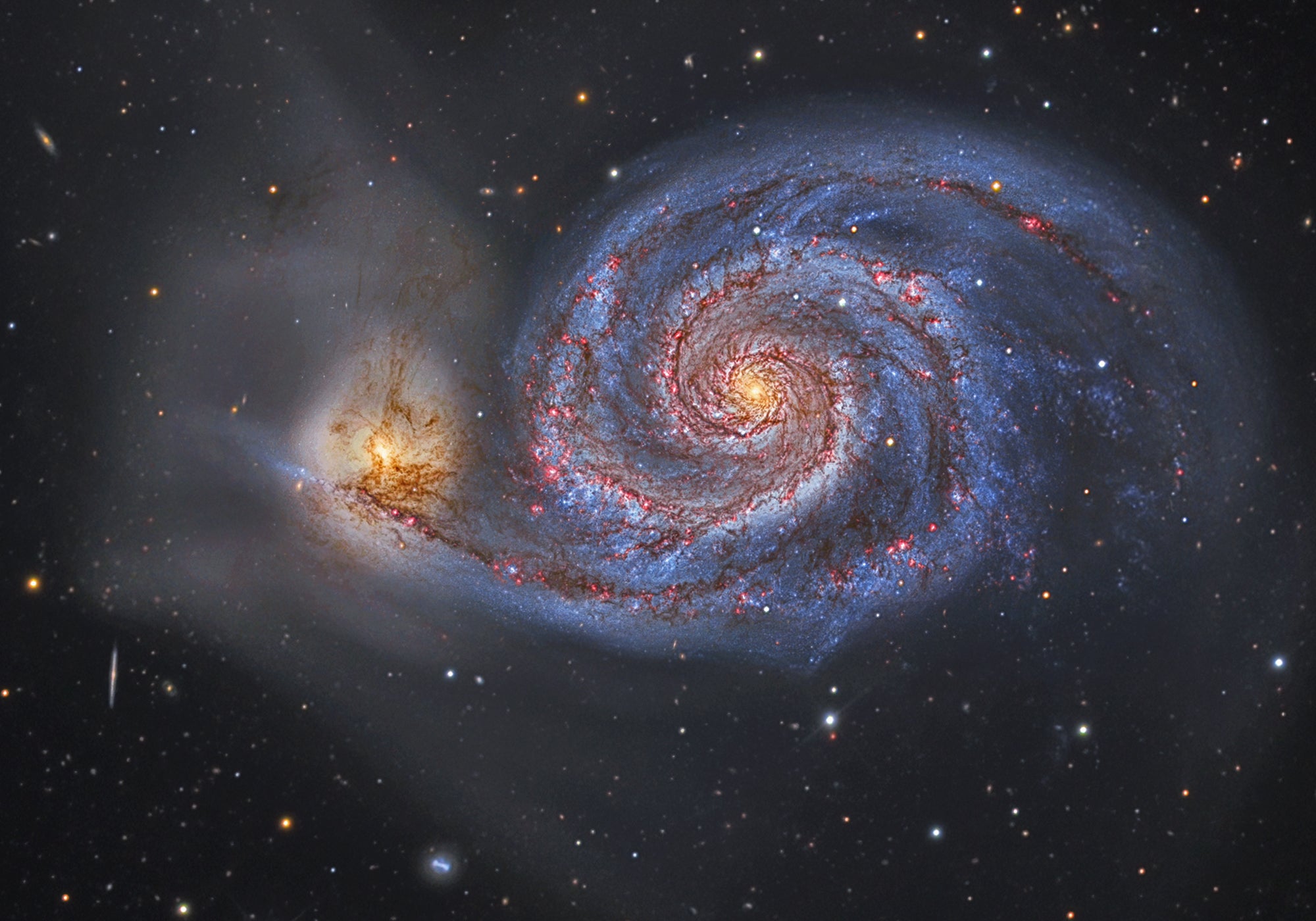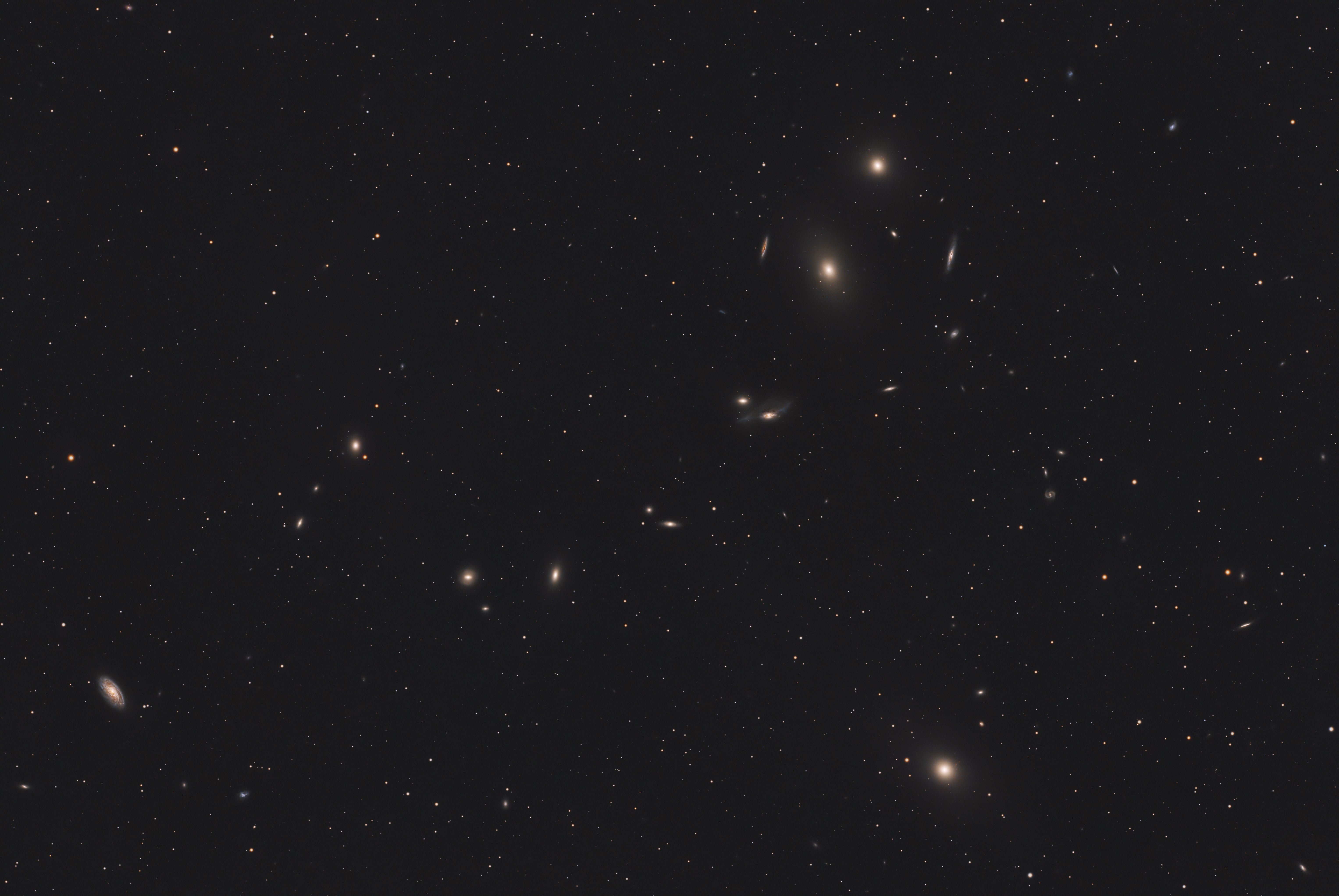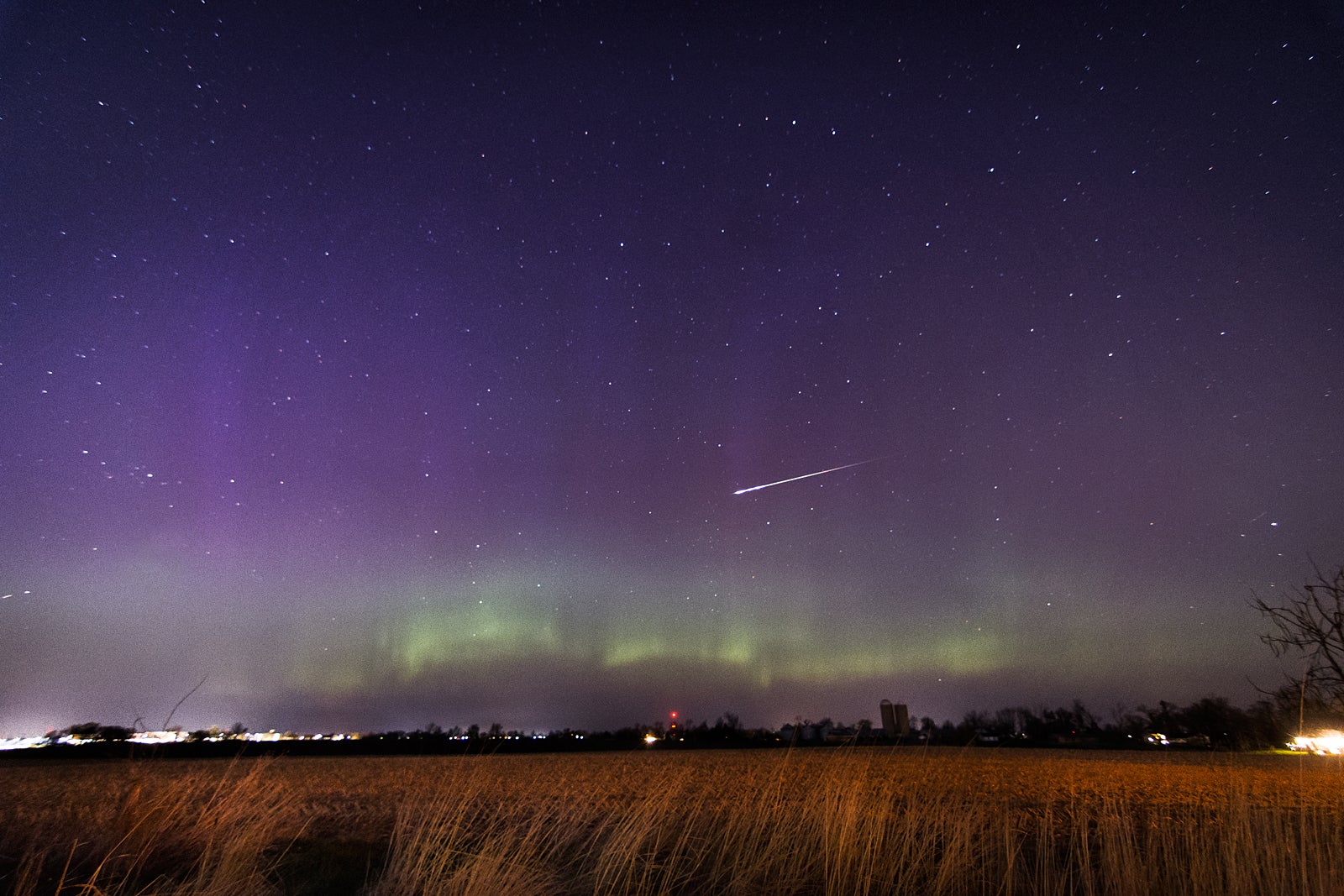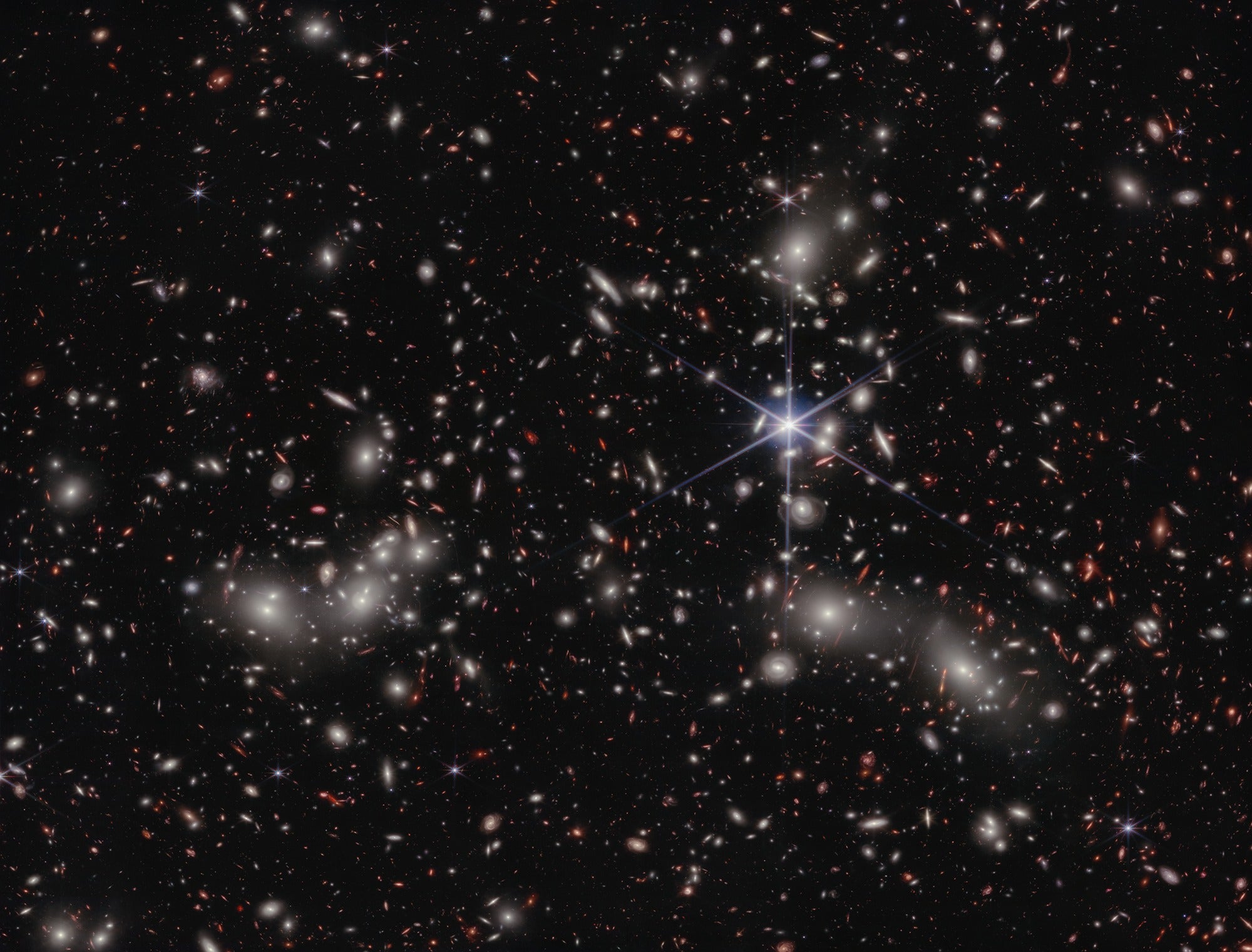These observations reveal that massive galaxies appeared in the universe as early as 1 billion or 2 billion years after the Big Bang. But how were there already enough stars to make such large galaxies? The findings imply that early massive galaxies must have formed stars at incredibly high rates.
The team says their find is something of a “cosmic yeti” because astronomers previously dismissed the idea that such monster early galaxies ever existed.
The researchers reported their find Tuesday in The Astrophysical Journal.
A Serendipitous Find
Christina Williams, an astronomer at the University of Arizona, was using the Atacama Large Millimeter/submillimeter Array to study another galaxy when she noticed an unexpected little blob in her images. When she and her team investigated further, they realized the blob was an extremely distant galaxy more than 12 billion light-years away.
The researchers looked at other images of this patch of sky and discovered faint traces of the galaxy in various wavelengths of light. Those traces by themselves were too faint for anyone to be sure there was a galaxy there. But combined with the much clearer and brighter ALMA data, the researchers could be more confident that those traces of light came from the same galaxy. From the traces of light the researchers gathered, they were able to infer how fast the galaxy is building up its store of stars.
Because the researchers stumbled upon the galaxy by accident in a fairly small patch of sky, they believe these quickly star-forming galaxies aren’t rare.
“The fact that we’ve been able to find one object and that it’s relatively common — that makes me excited for future surveys,” Williams said. “Hopefully, we will find more, and then we’ll be able to measure the formation histories of these things better with future data.”
The newly discovered galaxy is part of the puzzle of how such massive galaxies formed so early in the universe. Before long, Williams hopes, astronomers will find more pieces of the puzzle and create a more complete picture of galaxies throughout the universe’s history.

